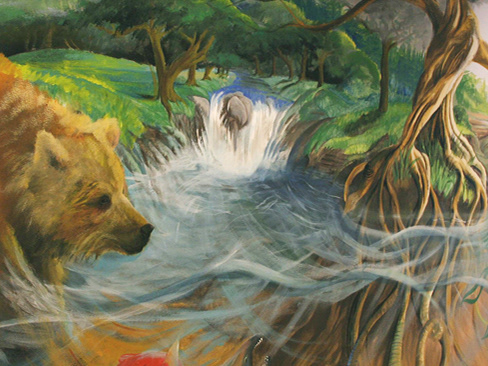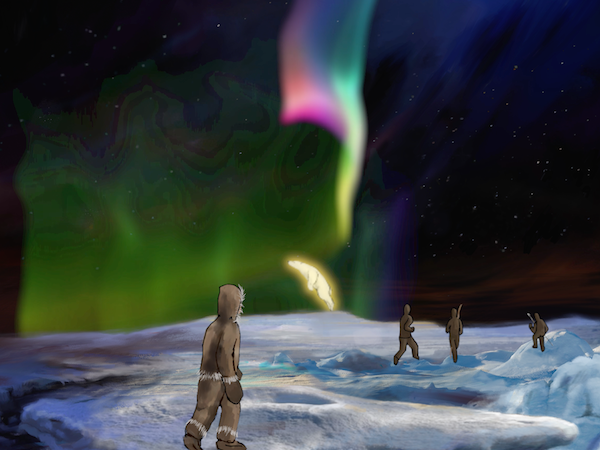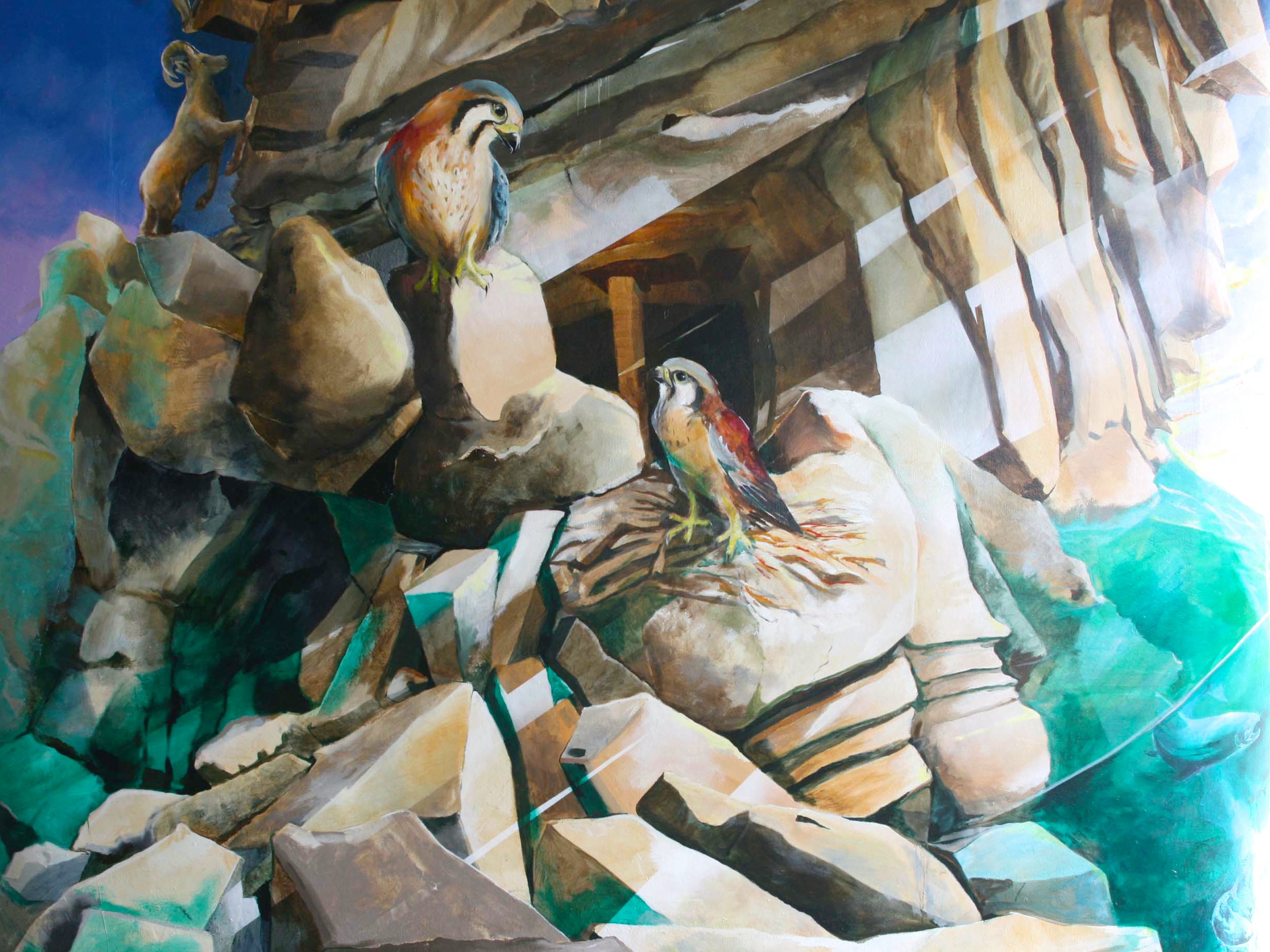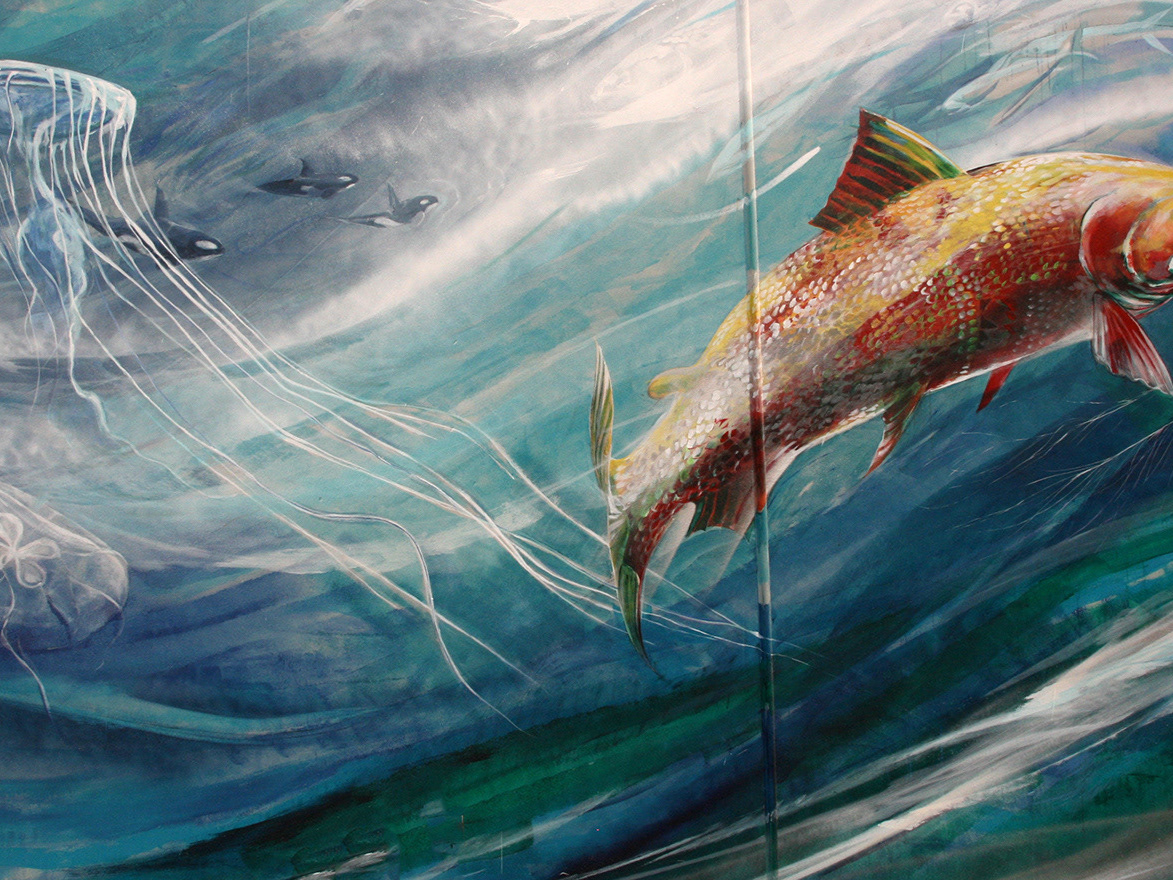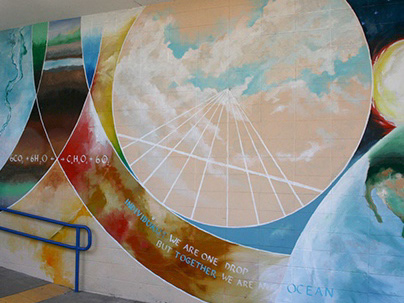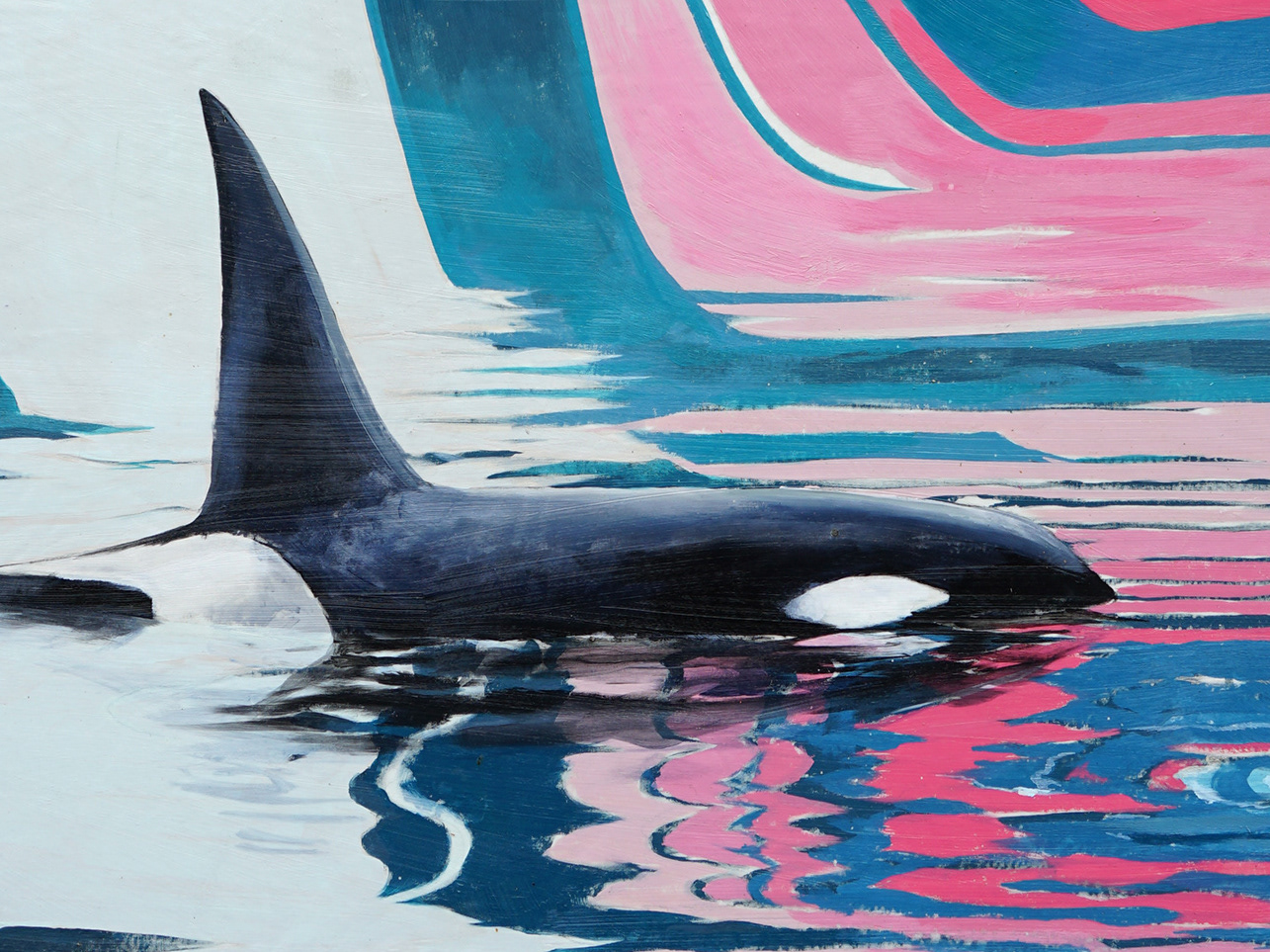This New Mural dedicated to the Trial of the Century was created by muralist, Esteban Camacho Steffensen and local youth, who are working with Our Children’s Trust in Eugene. It is the second of a proposed series of murals focused on the issue of Climate Change and using the imagery of triangular, puzzle pieces, which are painted to look like sedimentary rock. The first mural, Walk Lightly in Time, was done in Corvallis in May 2018. The puzzle pieces symbolize the interconnectedness of the issue of climate change, and the role that each person, city, and country must play in working together to solve this global crisis. The layers of striated earth, symbolize the many millennia that have passed in our evolution, which have led us to this moment in time. We are at a tipping point now where humanity’s survival hangs in the balance. Do we have the capacity to face our impact on the earth and learn how to evolve to meet the urgent needs of the crisis? The scales of justice, holding the earth on one side, and the sun on the other, are out of balance, and tipping in the wrong direction.
The central element of the mural however features iconic and hopeful images of Eugene: Spencer Butte and the date of the trial in Roman numerals, October 29, 2018: X-XXIX-MMXVIII. The latter is shining in a reflecting body of water, illusive of the rivers and lakes, which sustain life in the region. At both ends of the mural, forested landscapes depicting flooded Oaks and burning Spruce trees. These sections reflect the beauty of the natural world we love, and on which our lives depend--for clean water, fertile soil, fresh air, etc. This date is memorialized, before it has occurred, because of its significance to Oregonians and others who care about the kind of future we will leave behind us for future generations and all life on the planet.
The YouCan Corvallis mural, Walk Lightly In Time, is a complex, colourful design of an Oregon riparian landscape, giant geometric puzzle pieces, and layers of earth, formed over the millennia and embedded with fossils. The triangular, puzzle pieces symbolize the interconnectedness of the issue of climate change and the important role that each person, city, and country can play in working together to address and try to solve the challenge of the climate crisis.
The center section of the murals features the tracks of many living animal species, humans, and extinct dinosaur species. These tracks and human footprints are included to convey various messages to the public. One is that we are only one in a family of creatures that walk across this earth and we must share the planet with them. Another is that we must consider what kind of mark we leave, or in other words, what kind of carbon footprint we leave behind us as individuals, as a nation, and as a species. Another meaning embedded in the central puzzle piece of the mural is the message that most of earth’s species have gone extinct over the millennia, such as the dinosaurs, and it could happen to us as well. The dinosaur footprints are heading downward into extinction, while the tracks of living species are heading in the other direction, upwards into our common future. A future we can still create by working together to meet the challenges and threats of climate change, if each of us joins with our community to play our critical piece in the existential puzzle for the survival of human life, as we know it.



